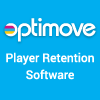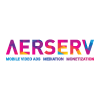The pervasiveness of mobile video among consumers and brand advertisers alike has publishers at the edge of their seats. In this session, Tal Shoham, VP International Business Development for Supersonic by ironSource, revealed why video has become the ad format of choice for app developers, as well as the emerging market trends that support its growth. One thing that we have seen is that “adding video ads also increased IAP by 50% in Upopa games”, shared Tal during a recent talk at Casual Connect Europe. The talk further outlined the key benefits and metrics behind video monetization, and demonstrated how developers can leverage this increasingly popular format to maximize ad revenue.
DOWNLOAD SLIDES
Tal Shoham, VP of International Business Development at Supersonic by ironSource, uses Supersonic’s extensive knowledge of the latest monetization trends to contribute to the success of the company’s innovative partners. From their Tel Aviv office, Tal works to develop lasting business relationships with developers and publishers from across the globe and assist them in creating strong monetization strategies. Recently, Tal described his work to Casual Connect and shared his insights about the game industry.
Casual Connect: Tell us about the work you do at Supersonic with ironSource. How did you come to work there?
Tal Shoham: I have always been fascinated by the online business world and Israeli tech startup scene. I was previously in the Israeli defense industry. Once I decided to change directions in my life, and with strong connections to the industry, I pursued a move to tech.
As VP of International Business Development at Supersonic by ironSource, my work involves developing business relationships with publishers and developers around the world. My job includes growing our partnerships with current clients as well as developing relationships with new businesses.
CC: What is your favorite thing about your job?
Tal: My favorite thing about my job is my close relationships with our partners and clients. Our partners are usually incredibly smart companies that are innovative and growing quickly. My joy is developing close relationships with them as we help them find solutions and expand. Being in close contact with the companies that lead the market is incredibly satisfying, as I’m able to learn from them.
CC: How have your past career experiences been helpful to you as VP at Supersonic by ironSource?
Tal: Overall, in the past twelve years, I’ve been involved in jobs that included managing people and developing relationships – either with internal personnel or external clients. In business, I’ve learned it’s always about relationships and having that unique contact with the person you’re talking to – personal relationship building. And that’s what I try to execute on a daily basis.
CC: What inspired you to pursue this career?
Tal: I have always been fascinated by the online business world and Israeli tech startup scene, and with strong connections to the industry, I pursued a move to tech pretty early on in my career.

CC: How did you become involved in the game industry? How did you make your start? What do you find to be the most fun part?
Tal: The most fun part of being involved in this industry is growing together with our partners and playing an active part in their success. Collaborating with a company and seeing that company further develop, grow and succeed, together with our technology, is something that always excites me and is one of the core values of our company.
CC: What are some of the challenges you have faced in your current position? How have you overcome these challenges?
Tal: Clearly, this industry is a very fast-paced industry, so it’s always a challenge to ensure we’re keeping up with and adapting to new partners’ needs and constantly changing technology. While this is a challenge most companies deal with, we’re actively addressing this challenge by having a strong R&D team, a superb sales team, and above all, a superior technology.
CC: What do you do in your free time? What are your hobbies?
Tal: I enjoy photography, Nintendo games and skiing. I’m also a huge Star Wars fan (I even have a pretty serious bobble head collection) and, in my free time, I enjoy hanging out with my friends and family.
CC: If you were not in this industry, what would you be doing?
Tal: I like to imagine I would be in the film industry – I’d want to be a top Hollywood director!
CC: What was your dream job as a child?
Tal: I always wanted to be a pilot.
CC: What has been your proudest moment in your career so far? What led to this moment happening?

Tal: It’s not a specific moment, but simply being a part of this company from the very beginning. Even before I started working in the company, I was very much a part of the process, and so being a part of something that initially began with just a couple of people and an idea to the point where we are now – an 700 person company and a leader in the market. So it’s not one moment that I’m proud of, it’s the entire process of building the company. Seeing its growth, and seeing ourselves becoming leaders of the industry is something that continues to excite me and is something that I’m very proud of.

CC: What do you think will be the next big trend in the industry in the next three to five years? How are you incorporating this trend into your future plans?
Tal: As discussed in my presentation at Casual Connect, I see a rise in rewarded video, with more and more developers and advertisers investing in this quality ad format. At Supersonic by ironSource, we’re heavily investing in our platform for video in order to deliver high quality videos.
CC: What are some of the challenges you have faced in monetization?
Tal: One of the biggest challenges is publishers fearing that adding monetization solutions is going to cannibalize their own monetization strategy and their own IAP. It’s something we’ve been dealing with since Day 1 and is probably our biggest challenge.
There are multiple ways we like to approach this problem: one is through customizing the monetization solutions per client while offering full transparency and control for our clients. You’re not going to see the same flow within each app, as we are building customized mock-ups and decks and flows per client per presentation.
Another approach to dealing with this problem is through segmentation. Our segmentation and profiling techniques allow us to treat each user individually – differentiating the content and frequency capping that each one can see in order to optimize potential for each user.
The third way to deal with this monetization challenge is through analytics. By studying and retrieving data from our partners about what effects our tools have on their monetization strategy, we are fully equipped to alter and improve monetization results. The data we gather shows that, if done right, not only does rewarded video not harm the app’s economy, but it increases a lot of KPIs such as engagement, time spent in app, increased conversions, IAP revenue, and more paying players.
CC: What recommendations do you have for smaller companies in addressing monetization issues?
Tal: Once a company starts building their game and application, their monetization strategy should be embedded in the initial planning and design of the app. When they begin sketching the idea, they should already start thinking about monetization strategies, from in-app offerings to ad networks, because if you want to build a strong monetization strategy in your game, it has to be a layer that’s very deeply embedded in your game’s mechanics and design.
You need to think about how you can create a need for the user to watch a video – do you want to offer gems or money? Extra lives or coins? And the best way to do that and to optimize it is to think about this from the very beginning planning stages of the game. Don’t think about creating a great game and then add monetization later. People do it and then they find out it’s much more difficult to integrate a seamless monetization system this way. The game’s design and monetization go together. This doesn’t mean you need to start heavily monetizing users from the beginning, but you should have a plan early on so that, when you want to add that aspect to your game and be more aggressive about it, you can do so more seamlessly because it was already laid out in your roadmap.
CC: What would you recommend to help developers minimize the frequency of players getting frustrated by ads and quitting as a result?
Tal: It’s about finding the right balance between maximizing users who will spend money in your game vs. users who will spend other resources in your game that are just as crucial – such as time or skill. Resources other than money can be used to benefit a user’s game experience. Time and skill can maximize a player’s success, so don’t plan your game so that a user’s only option to succeed is to spend money in the game. Once players start succeeding in the game, money will eventually follow because there will be people who will want to skip a few steps in order to succeed in the game – and that’s where you will get players who are willing to pay to advance.
CC: What have been some of the most effective tools for mobile marketing at your company?
Tal: In terms of getting high quality users, LTVs and positive ROIs result from marketing via video, which has the ability to raise the quality and volume for our advertisers.
CC: How have you handled constantly changing technology? How have you been able to incorporate it into your business?
Tal: Fifty percent of our company is R&D, and we offer some of the most advanced technology and solutions in the market. This is a direct result of our close relationships with our partners and clients, who help us identify the best areas to invest in building technology for the future. Our clients are people at the top of their game, which helps us to be always aware of what’s new, what’s hot and what’s changing – and to react quickly and accordingly.

CC: What changes do you hope to bring to the industry?

Tal: We’ve really evolved in our ability to become a one-stop-shop in the industry. We offer a truly end-to-end solution for everyone from developers and publishers, to marketers and advertisers. Our goal is to continue expanding the services we offer, giving our partners the full spectrum of best-in-class tools for mobile monetization and marketing. They don’t need to use Supersonic by ironSource as their only vendor; they can use other vendors and ad networks using our mediation – but everything will be managed and optimized through a single platform and a lightweight SDK - which makes all the difference. That’s one of the main things we’re trying to bring: unified managing and reporting. We’re also solving the problems for developers around monetizing their games not solely through their IAP and on new tactics for them to grow their user base.
Comments










